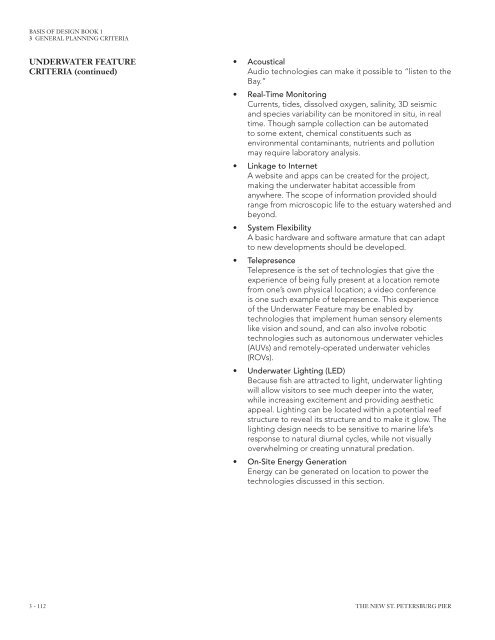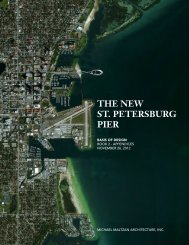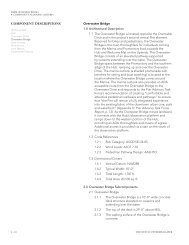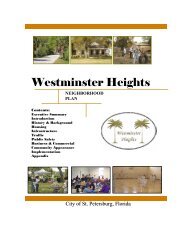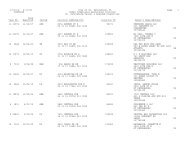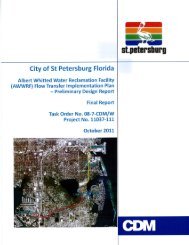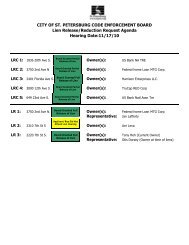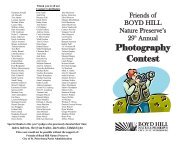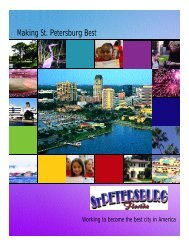Book 1 - City of St. Petersburg
Book 1 - City of St. Petersburg
Book 1 - City of St. Petersburg
You also want an ePaper? Increase the reach of your titles
YUMPU automatically turns print PDFs into web optimized ePapers that Google loves.
BASIS OF DESIGN BOOK 1<br />
3 GENERAL PLANNING CRITERIA<br />
UNDERWATER FEATURE<br />
CRITERIA (continued)<br />
• Acoustical<br />
Audio technologies can make it possible to “listen to the<br />
Bay.”<br />
• Real-Time Monitoring<br />
Currents, tides, dissolved oxygen, salinity, 3D seismic<br />
and species variability can be monitored in situ, in real<br />
time. Though sample collection can be automated<br />
to some extent, chemical constituents such as<br />
environmental contaminants, nutrients and pollution<br />
may require laboratory analysis.<br />
• Linkage to Internet<br />
A website and apps can be created for the project,<br />
making the underwater habitat accessible from<br />
anywhere. The scope <strong>of</strong> information provided should<br />
range from microscopic life to the estuary watershed and<br />
beyond.<br />
• System Flexibility<br />
A basic hardware and s<strong>of</strong>tware armature that can adapt<br />
to new developments should be developed.<br />
• Telepresence<br />
Telepresence is the set <strong>of</strong> technologies that give the<br />
experience <strong>of</strong> being fully present at a location remote<br />
from one’s own physical location; a video conference<br />
is one such example <strong>of</strong> telepresence. This experience<br />
<strong>of</strong> the Underwater Feature may be enabled by<br />
technologies that implement human sensory elements<br />
like vision and sound, and can also involve robotic<br />
technologies such as autonomous underwater vehicles<br />
(AUVs) and remotely-operated underwater vehicles<br />
(ROVs).<br />
• Underwater Lighting (LED)<br />
Because fish are attracted to light, underwater lighting<br />
will allow visitors to see much deeper into the water,<br />
while increasing excitement and providing aesthetic<br />
appeal. Lighting can be located within a potential reef<br />
structure to reveal its structure and to make it glow. The<br />
lighting design needs to be sensitive to marine life’s<br />
response to natural diurnal cycles, while not visually<br />
overwhelming or creating unnatural predation.<br />
• On-Site Energy Generation<br />
Energy can be generated on location to power the<br />
technologies discussed in this section.<br />
3 - 112<br />
THE NEW ST. PETERSBURG PIER


